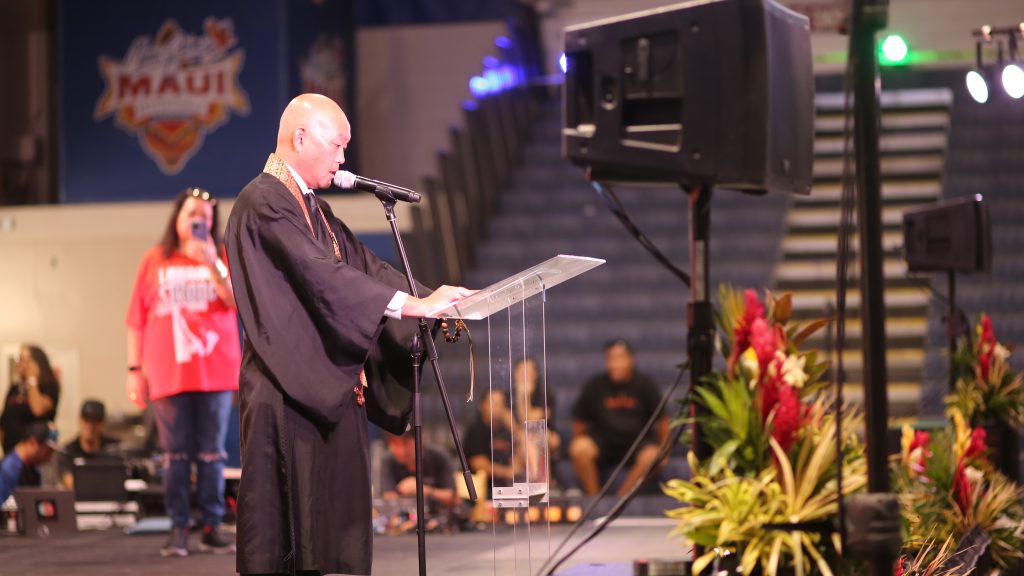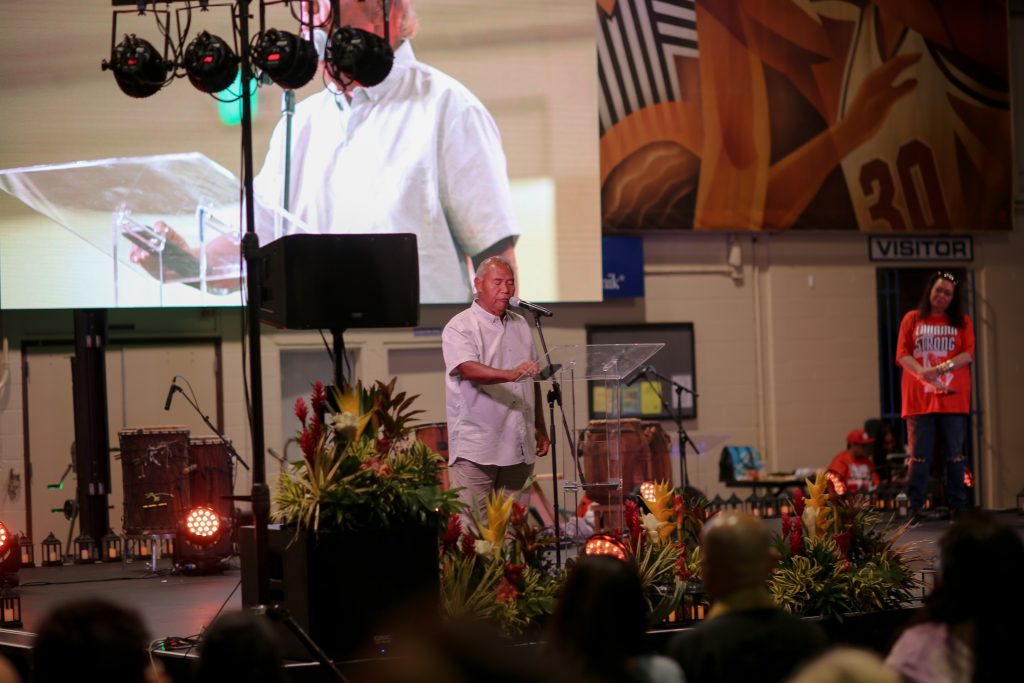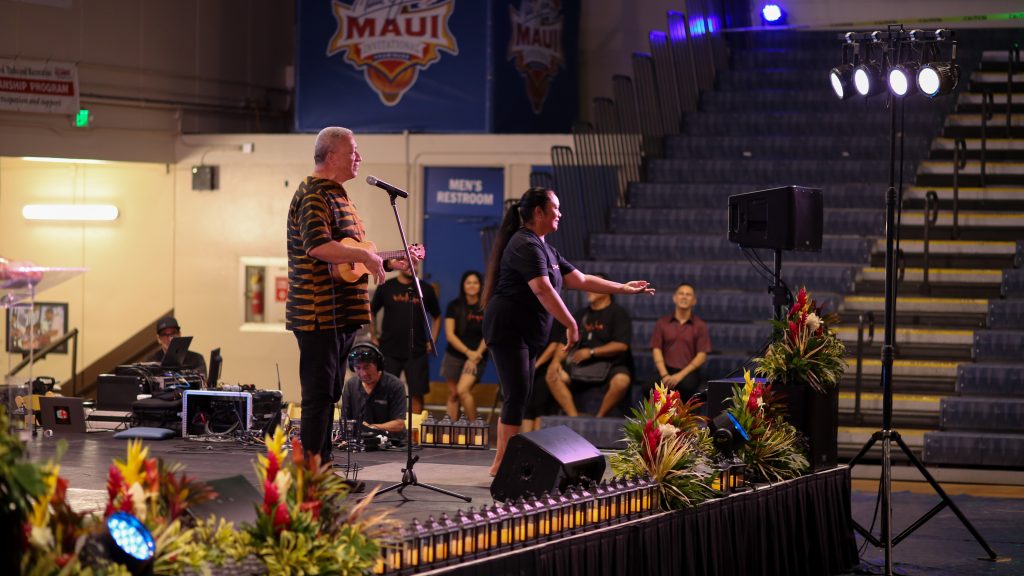By Yiming Fu, Report for America corps member
Ai Hironaka, a minister at Lahaina Hongwanji’s mission recalled sleeping in a tent on the patio with a friend in Wailuku after his temple burned down. While he first tried to stifle his tears, he learned that there was a strength in his grief.
“Crying does not make someone weak. Remembering what was lost in a sudden moment does not make someone weak,” Hironaka said.
Religious leaders from Lahaina’s Christian churches and Buddhist temples left in ruins after the fire delivered uplifting messages at Lahaina’s Day of Hope and Prayer Sunday, followed by speeches from the elder and youth generations. After a moment of silence at 12:00 p.m. to honor the lives lost, the stage show Ulalena returned to Maui after more than five years of hiatus. Ulalena tells the story of the history and mythology of the Hawaiian Islands. Mayor Richard Bissen also took to the stage at the Lahaina Civic Center and sang to the crowd with a ukelele.
The message of the morning: you can’t look forward without learning from the past.

The event was Lahaina’s last for Kuhinia Maui, a stretch of nine events over four days that brought the island’s community together to mourn, sing, dance and share stories. “Kuhinia” means fertile and abundant and a sense of satisfaction.
Earl Kukahiko spoke representing Kupuna, which means honored elder. He said it was hard to lose the comfort, fortunes and normalcies of everyday life after the fire. And each morning he wakes up with the challenge of not knowing if he wants to get up and do something or stay in bed and sulk.
But he hears his dad in the back of his head all the time. “Just get up and move.”

“As difficult of policies, rules, regulations and personalities we may encounter, press on. Because if we don’t, they win. Don’t let them win.”
While the first two weeks after the fire were full of tragedy, Kukahiko said, the love and care that families showed each other gave him the confidence that Lahaina has the heart it takes to build an even better town.
“Together we can and together we will build a better life. Not with selfishness, not with greed, but with a cohesive understanding that we can honor our past, live and speak in comfort in the present, and continue to build our legacy for future generations to come.”
After Kuhakiko, 17-year-old Kawekiu Palakiko moved the audience with her testament on growing up in some of Lahaina’s most challenging times as a young person and seeing the best of humanity in her community. She remembers evacuating and losing her childhood home in a previous Lahaina fire in 2018. Then in 2023, she watched her friends lose their homes and her favorite business reduced to ash. But she looks forward to creating a new Lahaina.
“Walking through the charred remains of what was once a vibrant town, I felt an overwhelming sense of loss, but also a spark of hope. I saw the way people came together and talked about sustainability. Not just to mourn what was gone, but to plan what we could do.”
Resilience is not just about bouncing back, Palakiko said, but about taking hardship and moving forward.
“The flames have taken so much from us, home memories, and even loved ones. But they have not taken our strength. They have not taken our aloha or our resilience.”

(Reporter Yiming Fu is based in Maui and follows the recovery from the Lahaina fire for AsAmNews)
AsAmNews is published by the non-profit, Asian American Media Inc.
We’re now on BlueSky. You can now keep up with the latest AAPI news there and on Instagram, TikTok, Facebook, YouTube and X.
We are supported by generous donations from our readers and by such charitable foundations as the Robert Wood Johnson Foundation.
You can make your tax-deductible donations here via credit card, debit card, Apple Pay, Google Pay, PayPal and Venmo. Stock donations and donations via DAFs are also welcomed.


